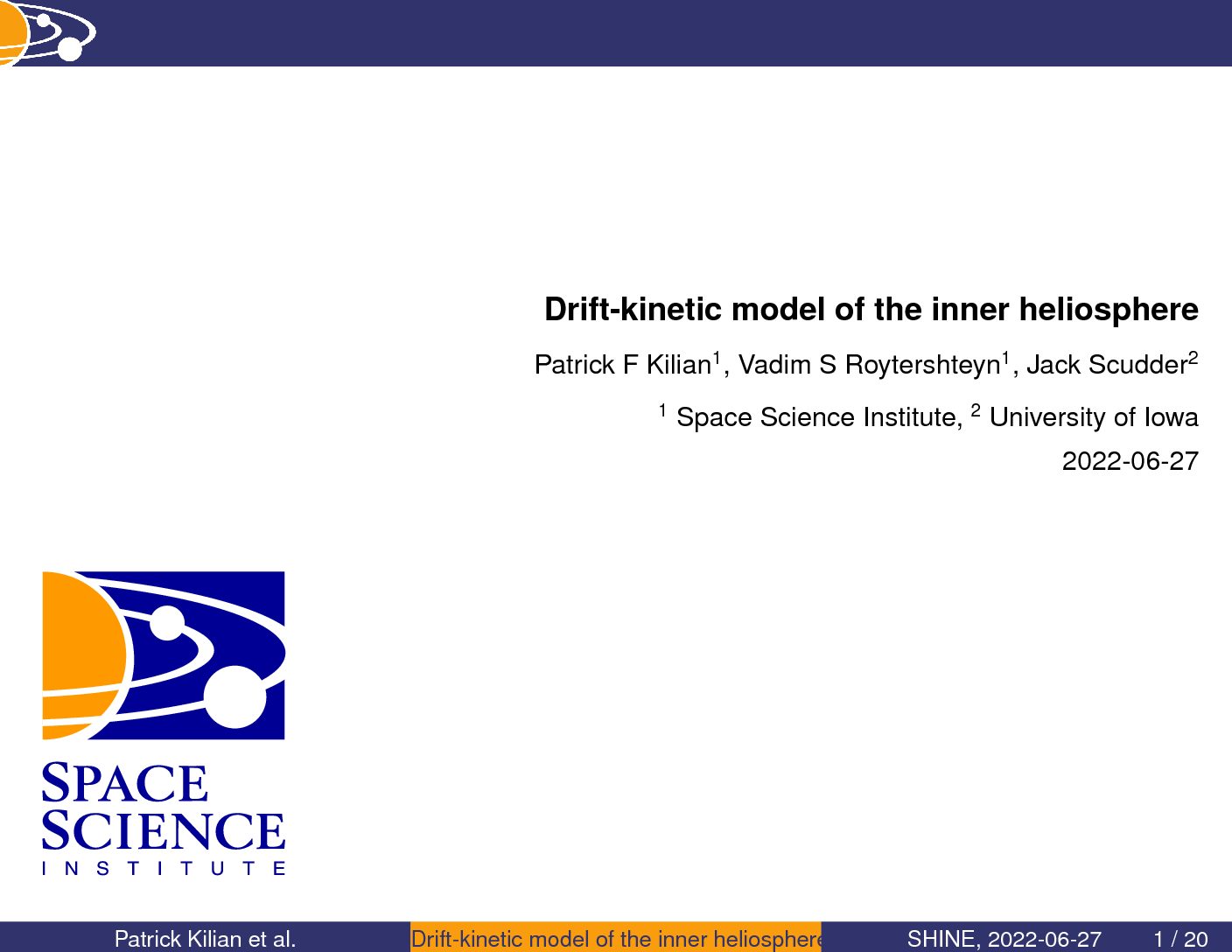Authors: Patrick Kilian (Space Science Institute), Vadim Roytershteyn (Space Science Institute), Jack Scudder (Space Science Institute)
The solar wind undergoes large changes in density and collisionality as it moves from the Sun into interplanetary space. At small radii collisions force the electrons and ions to maintain Maxwellian distribution functions of equal temperatures. But as the density and the frequency of collisions goes down this constraint is increasingly lifted. Simultaneously the importance of the parallel electric field grows that is required to maintain charge neutrality between the more mobile electrons and the more gravitationally bound ions. This field accelerates electrons downwards and grows above the Dreicer critical
field. To study the electron distribution function above the runaway boundary and the formation of the field aligned Strahl we formulate a global 1d2v drift-kinetic model that includes gravity. We use an accurate collisional model with minimal assumptions regarding the shape of the distribution and compute a self-consistent electric field from the requirements of quasi-neutrality and zero current. The solutions for the particle distribution functions describes both thermal and nonthermal particle populations within the same framework. The goal is to compare the radially evolving parallel electric field with the local Dreicer critical field and study how that impacts the appearance of a runaway boundary in velocity space and the production of non-thermal leptokurtic distributions.


